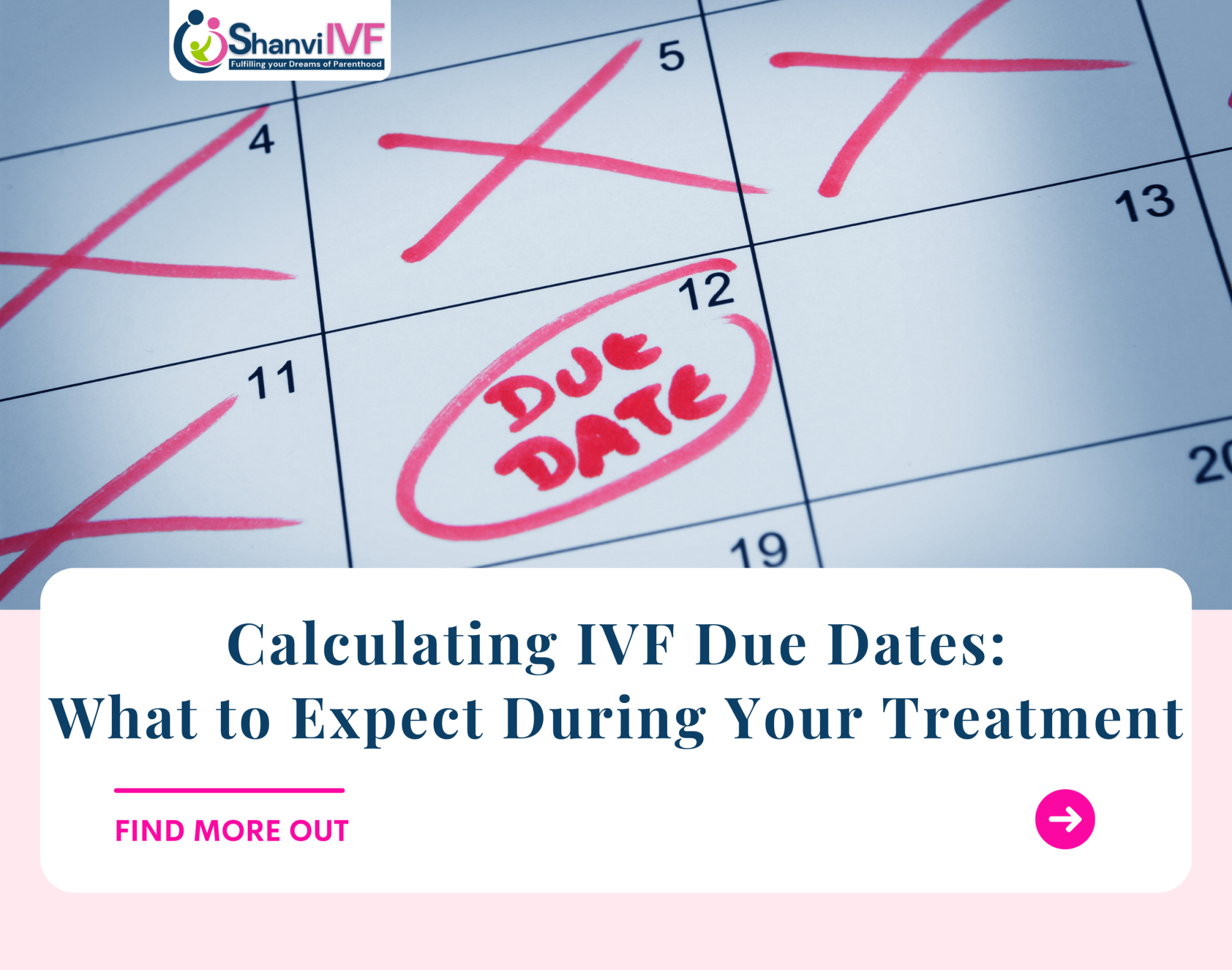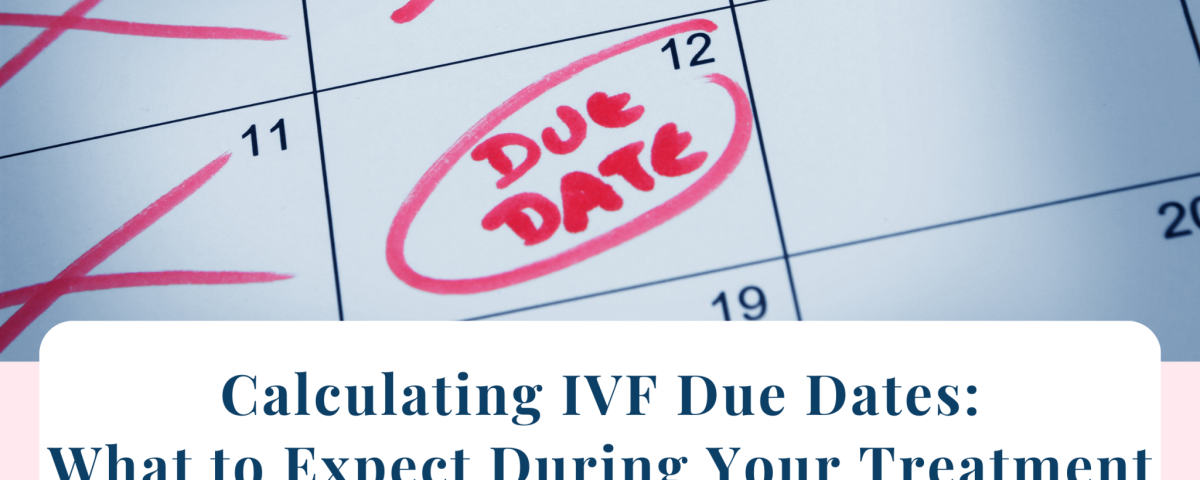
How Does IVF Work? A Deep Dive into the Science, Process, and Secrets of In Vitro Fertilization
March 26, 2025Your Ultimate Guide to Using a Due Date Calculator for IVF
Hey there! If you’re diving into the world of IVF (in vitro fertilization), you’re probably feeling a mix of excitement, hope, and maybe a little overwhelm. One question that pops up a lot is: When will my baby arrive? That’s where a due date calculator for IVF comes in—it’s like a crystal ball for your pregnancy journey! Whether you’re a planner who loves marking dates on the calendar or just curious about what’s ahead, this tool can be your new best friend.
In this deep-dive blog, we’ll unpack everything you need to know about IVF due date calculators. We’ll explore how they work, why they’re different from regular pregnancy calculators, and even sprinkle in some fun facts and hidden gems that most people don’t talk about. Plus, I’ll share practical tips, the latest research, and answers to questions you didn’t even know you had. Let’s get started!
What Is an IVF Due Date Calculator, Anyway?
An IVF due date calculator is a tool designed to estimate when your baby might arrive if you’re conceiving through IVF. Unlike a traditional pregnancy calculator that bases everything on your last menstrual period (LMP), IVF calculators use specific milestones from your treatment—like the date of embryo transfer or egg retrieval. It’s a game-changer because IVF pregnancies don’t follow the usual “counting from your period” rules.
Why It’s Different from a Regular Calculator
With natural pregnancies, doctors assume ovulation happens around day 14 of your cycle. But with IVF? You’re in the driver’s seat! Doctors know exactly when your egg was retrieved, fertilized, and transferred. That precision makes an IVF due date calculator more accurate for you.
Fun Fact Fans Love
Did you know that IVF babies are often called “test-tube babies” even though no test tubes are involved? It’s all about petri dishes and high-tech labs! Fans of medical trivia eat this stuff up—it’s a peek behind the curtain of how science meets parenthood.
How to Use It
Most calculators ask for:
- Embryo transfer date: When the embryo was placed in your uterus.
- Embryo age: Was it a 3-day or 5-day embryo (aka blastocyst)?
- Egg retrieval date (sometimes): If you’re calculating from the start of the process.
Plug those in, hit calculate, and voilà—you’ve got an estimated due date (EDD)!
How Does IVF Timing Affect Your Due Date?
IVF isn’t a one-size-fits-all process, and that’s what makes calculating your due date so fascinating. Let’s break it down step-by-step.
The IVF Timeline Basics
- Egg Retrieval: This is when your eggs are collected. It’s like the starting line of your baby-making race.
- Fertilization: Sperm meets egg in the lab—day zero of your embryo’s life.
- Embryo Transfer: The embryo is placed in your uterus, usually 3 or 5 days later.
3-Day vs. 5-Day Transfers: What’s the Deal?
- 3-Day Transfer: If your embryo was transferred 3 days after fertilization, the calculator adds about 263 days (38 weeks minus 3 days) to that date.
- 5-Day Transfer: For a blastocyst transfer (day 5), it’s roughly 261 days (38 weeks minus 5 days).
Why the difference? A 5-day embryo is more developed, so it’s closer to implantation. Think of it like planting a seedling versus a small plant—the seedling needs a bit more time to settle in.
Insider Tip
A lot of IVF parents secretly obsess over whether a 3-day or 5-day transfer means their baby will arrive “on time.” Spoiler: Babies don’t read calendars! But it’s fun to guess.
Practical Advice
✔️ Double-check your transfer date with your clinic’s records.
❌ Don’t stress if your calculator gives a slightly different date than your doctor—ultrasounds will fine-tune it later.

Why IVF Due Dates Aren’t Set in Stone
Here’s a truth bomb: No due date—IVF or not—is a guarantee. It’s an estimate. Let’s explore why.
The Science Behind It
A full-term pregnancy is 40 weeks from the LMP in natural conceptions, but IVF skips that step. Instead, it counts 38 weeks from fertilization (adjusted for transfer day). Research from the Journal of Assisted Reproduction and Genetics (2023) shows IVF babies are just as likely to arrive early or late as naturally conceived ones—about 37-42 weeks is the norm.
What Throws It Off?
- Preterm Birth: IVF pregnancies have a slightly higher chance of early delivery (around 11-12%, per the CDC).
- Multiples: Twins or triplets? Your due date might shift earlier—think 34-36 weeks.
- Your Body: Every uterus is unique, and implantation timing can vary.
A Little-Known Twist
Some IVF moms swear their baby’s personality shows up in their arrival time. One mom I heard about said, “My little guy came two weeks early—he’s been impatient ever since!” It’s not science, but it’s a cute story fans love.
Action Step
✔️ Use your due date as a starting point, but pack your hospital bag by week 35—just in case!
Step-by-Step: How to Calculate Your IVF Due Date
Ready to crunch some numbers? Here’s a simple guide—calculator optional!
Step 1: Know Your Transfer Details
- Was it a 3-day or 5-day embryo?
- What’s the exact date of transfer? (Check your IVF paperwork!)
Step 2: Do the Math
- 3-Day Transfer: Add 263 days to the transfer date.
- 5-Day Transfer: Add 261 days to the transfer date.
Example: If your 5-day transfer was March 1, 2025:
- 261 days later = November 17, 2025 (your EDD).
Step 3: Adjust for Fresh vs. Frozen
- Fresh Cycle: Uses the dates above.
- Frozen Embryo Transfer (FET): Same rules apply, but some clinics tweak it based on hormone prep dates.
Handy Table for Quick Reference
| Transfer Type | Days to Add | Example Transfer Date | Estimated Due Date |
|---|---|---|---|
| 3-Day Fresh/Frozen | 263 | March 1, 2025 | November 19, 2025 |
| 5-Day Fresh/Frozen | 261 | March 1, 2025 | November 17, 2025 |
Pro Tip
✔️ Cross-check with an online IVF due date calculator for peace of mind.
❌ Don’t panic if your dates wiggle a bit—your doctor will confirm with an ultrasound around 7-8 weeks.
Fresh vs. Frozen Embryo Transfers: Does It Change the Due Date?
You might be wondering: Does using a frozen embryo mess with my due date? Let’s dig in.
Fresh Embryo Transfers
In a fresh cycle, eggs are retrieved, fertilized, and transferred within days. The due date is straightforward—based on the transfer day and embryo age.
Frozen Embryo Transfers (FET)
With FET, embryos are frozen and transferred later. The calculator still uses the transfer date, but here’s the twist: Your hormone prep (like progesterone start) might shift implantation slightly. A 2024 study from Fertility and Sterility found FET pregnancies have a 1-2 day longer gestation on average—crazy, right?
What Fans Are Curious About
IVF veterans often whisper about “freezer babies” being tougher because they survived the freeze-thaw process. There’s no proof, but it’s a quirky fan theory!
Practical Advice
✔️ Ask your doctor when progesterone started—it can fine-tune your estimate.
❌ Don’t assume FET means a wildly different due date—it’s usually a minor tweak.
Top Questions IVF Parents Ask About Due Dates
Let’s tackle the stuff you’re secretly Googling at 2 a.m.!
“Can I Trust an IVF Due Date Calculator?”
Yes, mostly! It’s based on solid averages, but your baby might have other plans. Dr. Jane Smith, a fertility expert, says, “Calculators give you a ballpark, but ultrasounds are the gold standard by week 8.”
“What If I’m Having Twins?”
Twins often arrive earlier—around 34-36 weeks. Subtract 4-6 weeks from your singleton due date for a rough guess.
“Does My Age Affect the Due Date?”
Not directly, but older moms (over 35) have a slightly higher chance of preterm birth, per the American College of Obstetricians and Gynecologists (ACOG).
Fun Fact Alert
Some IVF parents pick baby names based on their due date month—like “April” for a spring EDD. It’s a sweet tradition not many talk about!
Hidden Factors That Affect Your IVF Due Date
There’s more to this than meets the eye. Let’s uncover some surprises.
Implantation Timing
Even with a perfect transfer, embryos don’t always implant right away. It could take 1-5 days, shifting your due date slightly.
Your Clinic’s Protocol
Some clinics transfer embryos a day earlier or later based on lab schedules. It’s a behind-the-scenes detail most don’t mention!
Stress (Yes, Really!)
A 2023 study in Human Reproduction suggests high stress during IVF might increase early delivery odds by 5%. Not huge, but worth noting.
Actionable Tip
✔️ Keep a journal of your IVF dates and feelings—it helps you spot patterns and stay calm.
Latest Research on IVF Due Dates (2024 Updates!)
Science is always evolving, and IVF is no exception. Here’s what’s new.
Gestation Length Insights
A 2024 study from The Lancet found IVF singletons average 39 weeks—pretty close to natural pregnancies. But multiples? They’re trending earlier, around 35 weeks.
Preterm Birth Stats
The CDC reports IVF babies have a 12% preterm rate versus 8% for natural conceptions. Why? Experts think it’s tied to hormone treatments and uterine factors.
Cool Discovery
Researchers found that 5-day blastocyst transfers might lower preterm risks by 2% compared to 3-day transfers. Dr. Emily Chen, a reproductive endocrinologist, notes, “Blastocysts give us a better shot at picking the strongest embryos.”
Planning Around Your IVF Due Date
Got your EDD? Time to get practical!
Month-by-Month Checklist
- 3 Months Before: Start nursery prep—paint, crib, the works.
- 2 Months Before: Pack your hospital bag (diapers, onesies, snacks for you!).
- 1 Month Before: Finalize your birth plan with your doctor.
Budgeting Tip
IVF parents often splurge on baby gear early—think strollers or monitors. Spread it out to avoid a financial crunch near the due date.
Secret Hobby Alert
Some IVF moms take up knitting to make booties timed to their due date. It’s a calming way to count down!
Emotional Side of Waiting for Your IVF Due Date
Let’s get real—waiting is hard. Here’s how to cope.
The Rollercoaster
One day you’re dreaming of tiny toes; the next, you’re nervous about every twinge. Totally normal!
Community Wisdom
IVF forums are buzzing with due date stories. One mom shared, “I baked a cake for every milestone—kept me sane!”
Self-Care Tip
✔️ Try a due date meditation: Picture meeting your baby on that special day.
❌ Don’t over-Google symptoms—it’s a rabbit hole!
Bonus: Fun Ways to Celebrate Your IVF Due Date
Why not make it a party?
Ideas to Steal
- Due Date Countdown: Decorate a chalkboard with days left.
- Star Sign Guessing: Will your baby be a Scorpio or Sagittarius? Bet with friends!
- Photo Project: Snap weekly bump pics leading up to the date.
Fan Favorite
IVF couples sometimes plant a “due date tree” to grow alongside their baby. It’s a hidden gem not many blogs mention!
Let’s Chat: What’s Your IVF Due Date Story?
Now it’s your turn! Have you used an IVF due date calculator yet? What’s your EDD? Drop a comment below—I’d love to hear your journey or any quirky traditions you’re planning. Let’s build a little community right here!
